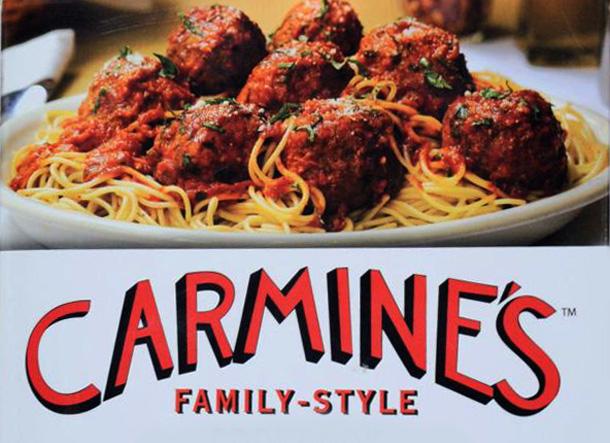Italian or Italian-American? It Is Definitely NOT the Same Food!
Consider this scenario: You are at New York’s legendary Italian restaurant, Carmine’s. The air is thick with the smell of Italian spices and red sauce, and as you enter heaped plates of spaghetti and garlic bread are placed on red and white checkered-clothed tables. You sit, order your salad, followed by Italian-American spaghetti and meatballs or linguini Alfredo brought out on large family-style serving plates, and accompanied by a bottle of Chianti perhaps.

Now consider scenario number two: You enter the Italian restaurant Trattoria da Luigi in Rome. The menu is presented and broken into much different categories than in America. You order a vino da tavola that is an unknown grape native to Lazio, prosciutto e melone for an antipasto, and notice that only two pasta dishes of 20 are served with red sauce. The pasta plates are small, and each person orders a meat dish to follow, capped off with an espresso. Both of these scenarios are in Italian restaurants, both claim to serve Italian food, but they are distinctly different.
As the world shrinks, Italians and Americans are discovering food on the opposite side of the ocean is not the Italian food they call their own. The dual label of “Italian” for both cuisines has much to do with strong Italian identification and pride in American immigrants from Italy, and a manifestation of that pride in a passion for food. Italian-American food reflects a Southern Italian peasant cuisine, mostly from the regions of Siciliy, Campania (Naples), and Calabria, modified with American ingredients, whereas Italian food has remained regional, made with fresh ingredients of the area.
Red sauce is the star in Italian-American homes and restaurants. Many Americans nostalgically recount Sundays at an Italian grandmother’s house, making red meat sauce to be served at a family dinner. The tradition of Sunday ragù can be traced to Naples in Italy, but the Italian American nostalgia linked with family identity and cultural pride launched the red sauce to the top of menus in American restaurants and households alike. In contrast, red sauces are not as common in Italy, and when they do appear, are more likely than not named salsa al pomodoro than marinara. (Marinara is actually a dialectal name referring to a quick sauce that wives of sailors, or marinai, could quickly put together when their husbands unexpectedly returned from sea.)
Italian pasta, as opposed to its sauce, is the star of a pasta dish in Italy. Sauces that lightly dress the primi piatti are generally simple with few ingredients. Italian-American dishes are often the opposite and tend to have more meat than Italian food. During the time of mass Italian immigration, meat was a luxury saved only for feast days and special occasions in Italy. However, upon arrival in America, immigrants found an abundance of meat at a much lower price. They began to celebrate their newfound prosperity by increasing the meat, beef in particular, in their plates. Everything was made bigger, better, and meatier.
The two countries also eat Italian cuisine in different sequences. Italy tends to follow the traditional order of antipasto, primo, secondo, contorno, frutta/dolce, caffe. However, Americans have modified this prolonged meal to often become a piatto unico, or a dish containing all food groups (meat, starch, vegetables). This could be because of American “efficiency” (getting all nutrients in one plate is quicker), or perhaps due to influence of other immigrant groups changing the way of eating. Either way, there is often one dish that is a star in American Italian meals, whereas Italian spreads its stars across several.
Italian-American and Italian cuisine have grown into two distinct cousins that share the same roots. Both have proud and distinguished communities that stand behind their dishes. Each has the potential to be made into a deliciously fresh and elegant plate, and each is appreciated, lauded for its taste, cultural and culinary history. But they are definitely not the same thing!
Learn more about:
Italian Recipes: Cook the Italian Way
